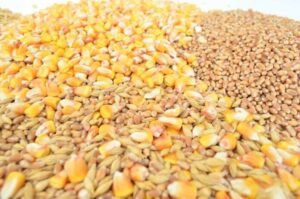
Ukrainian producers exported 66,700 tons of wheat flour during the 2024-2025 marketing year (July-June), which is 27.9% less than in the previous season, when this figure was 92,500 tons, according to the Ukrainian Flour Millers Association.
The industry association noted that about 46% of exports in the 2024/2025 season went to EU countries. The top five importers of Ukrainian flour were Moldova (20,300 tons), the Czech Republic (15,300 tons), Palestine (10,800 tons), France (3,000 tons), and Spain (2,900 tons).
Exports of other types of flour in the 2024/2025 season amounted to 4.6 thousand tons (in 2023/24 MY – 5.4 thousand tons). The share of EU countries in terms of export volumes was 14% (27% in 2023/2024 MY). The five countries to which other types of flour were supplied in 2024/25 MY were Moldova (3.2 thousand tons), Israel (0.5 thousand tons), Croatia (0.2 thousand tons), Bulgaria, and Spain (0.1 thousand tons each).
CZECH REPUBLIC, FLOUR, FRANCE, IMPORTER, MOLDOVA, PALESTINE, SPAIN

As of July 1, 2024-2025 marketing year (July-June), Ukraine exported 40.499 mln tonnes of grains and pulses, of which 2.217 mln tonnes were shipped in June, the press service of the Ministry of Agrarian Policy and Food reported, citing data from the State Customs Service.
According to the report, as of June 28 last year, the total shipments were estimated at 50.553 million tons, including 3.621 million tons in June.
According to the preliminary estimates, in 2024/25 season, Ukraine exported 15.704 mln tonnes of wheat (18.3 mln tonnes in 2023/24 MY), 2.318 mln tonnes of barley (2.477 mln tonnes), 10.8 thsd tonnes of rye (1.6 thsd tonnes), and 21.788 mln tonnes of corn (29.233 mln tonnes).
The total exports of Ukrainian flour in 2024/25 MY are estimated at 70.4 thsd tonnes (in 2023/24 MY – 97.8 thsd tonnes), including 65.8 thsd tonnes of wheat (92.4 thsd tonnes).
Thus, in the season-2024/25, the grain exports were down by 19.9% in general, by 14.2% for wheat, by 6.4% for barley, by 25.5% for corn, by 28.1% for flour, including 28.8% for wheat. At the same time, in 2024/25 MY Ukraine increased rye exports by 6.8 times.
As reported, in the season-24/25, the domestic market faced the deficit of rye. Flour mills and bakeries started importing it in winter 2025. The main countries supplying rye and rye flour to Ukraine are the Baltic states and Poland. Industry associations predict that in 2025/26 MY Ukraine will face a 100% deficit of rye due to the further reduction of the production area under this crop. According to experts, this will lead to a 20% rise in bread prices.

Flour and cereal producers are concerned about a reduction in flour exports to the European Union after the expiry of autonomous trade measures on June 6, as 75% of their exports currently go to the EU, Rodion Rybchinsky, director of the Ukrainian Flour Millers Association, said in an interview with Interfax-Ukraine.
“Starting from June 6, we have the opportunity to supply a total of 583,300 tons of wheat and wheat flour to the EU market by the end of the year. But since the quota is combined, I am not sure that we will be able to fill it. It is much easier for wheat exporters to find buyers in the EU and fill their quota,” he said.
Rybchynsky added that the industry association continues to use all possible communication channels to convey to European officials the need to allocate a separate quota for Ukrainian flour for export to the EU or to remove it altogether.
The head of the Ukrainian Flour Millers Association stated that before the war, there were 678 enterprises specializing in grain processing in Ukraine, but in 2022, 192 enterprises were destroyed and remained in the occupied territories. As of the end of 2024, 88 enterprises have been restored.
At the same time, according to his information, exports of flour and cereals have fallen by 50% since the start of the war. Among the reasons, the expert cited a reduction in production and changes in logistics: whereas exports used to be mainly by sea, since the start of the war they have been forced to switch to road and rail transport, which are more expensive than sea transport.
Due to problems with transporting products across the Black Sea, container shipping has not yet been fully restored. As a result, the geography of grain processing product sales has changed significantly since the beginning of the war: 75% of products are exported to the European market, of which 55% go to EU countries, 15% to the Middle East, 4% to Africa, and 2% to Asia, according to the head of the Ukrainian Flour Millers Association.
As reported, First Deputy Minister of Agrarian Policy and Food Taras Vysotsky said in comments to journalists that one of the government’s strategies in negotiations with the European Commission will be to request that the established quotas be divided by commodity codes.
The European Commission has approved quotas for Ukrainian agricultural products, which will be in effect from June 6 until the end of 2025 as part of the Deep and Comprehensive Free Trade Area (DCFTA) agreement. According to a document published on the EU website, by the end of 2025, Ukraine will be able to supply the EU market under the Deep and Comprehensive Free Trade Area in a 7/12 month mode (7/12) with wheat, flour, and meslin – 583,330 tons , corn – 379,167 thousand tons, barley – 204,167 thousand tons, poultry meat – 52,511 thousand tons, beef – 7 thousand tons, eggs – 3,500 tons, milk and cream – 5,833 tons, dry milk – 2,917 tons, butter – 1,750 tons.

Ukraine has supplied an additional 3,850 tons of wheat flour to Syria as part of President Volodymyr Zelenskyy’s humanitarian program Grain From Ukraine, Foreign Minister Andriy Sybiga said.
“Together with 500 tons in December, this will provide 60 thousand Syrians for six months,” he wrote on social networking site X.
Sybiga assured that Ukraine continues to support the Syrian people and food security in the Middle East.

As of the end of February of the 2023/2024 marketing year, which started on July 1, Ukraine has already exported more than 29.1 million tons of grain, legumes and flour, Danylo Hetmantsev, Chairman of the Verkhovna Rada Committee on Finance, Taxation and Customs Policy, said on Telegram.
He clarified that in terms of major crops, 15.8 million tons of corn, 11.5 million tons of wheat, and 1.6 million tons of barley were supplied to foreign markets.
“Compared to the same date last year, there is a lag of almost 2.6 million tons (although, for example, wheat was shipped a quarter of a million tons more than last year),” the head of the parliamentary financial committee said.
Mr. Hetmantsev explained the slowdown in grain exports by the fact that for a month and a half, in July and the first half of August last year, when sea exports were forced to pause due to Russia’s withdrawal from the Istanbul grain initiative, Ukraine had to develop an “alternative grain corridor.” In August 2023, thanks to the Ukrainian Armed Forces, it became available, and in the first months, foreign shipowners were restrained and cautious, looking closely at whether the new route was really safe, he recalled.
“In November 2023, some ‘friends and neighbors’ began to create obstacles for us on the land border under artificial and far-fetched pretexts, and these processes are still ongoing,” Hetmantsev wrote.
The chairman of the parliamentary committee expressed confidence that Ukraine would soon completely close the current gap.
He emphasized that in recent months, Ukraine has returned to almost pre-war export volumes, 90% of Ukrainian grain is shipped to foreign customers by sea, and dependence on the land corridor on the western border is decreasing.
“Thus, Ukraine will continue to play the role of one of the guarantors of global food security, while at the same time replenishing the treasury with serious foreign exchange earnings (in the near future, agricultural products will remain a key item of Ukrainian exports),” Hetmantsev summarized.

In 2022/23 marketing year (MY), Ukrainian flour millers increased flour exports to 149.7 thsd tonnes, which is 20.1% higher than in the pre-war 2020/2021 MY, when it reached 124.6 thsd tonnes, said Serhiy Serhii Sakirkin.
“That is, in a year when the sea was safe, containers (the cost of which was constantly cried about) of bran were in demand, the overstocking of warehouses could not be imagined even in bad dreams – but only 125 thsd tonnes. And here the sea is only in Romania and further, wild bets on trucks to ports and European consumers… Logistics is a nightmare! And 150 thsd tonnes!” he wrote in the review for APK-Inform analytical agency.
According to the report, in 2021/2022 MY the flour exports were the record low and amounted to 69.8 thsd tonnes. In the current marketing year, the export of Ukrainian flour is expected to reach 180 thsd tonnes, according to the industry association.
Considering the dynamics of flour exports by months, Sakirkin recalled that from March to June 2022, there was an “unclear state of affairs”.
“Then it became clear that we had to work and work in a new way. In July, we squared our shoulders and continued to work almost without disruption. Rare stability in contrast to the previous two years,” the expert said.
According to him, the price of flour last season was influenced by the global price factor and very expensive logistics.
“The terms of delivery, which include payment for transportation, are represented by other prices, but this is not a profit, unfortunately… By the way, the price dynamics of 2022/23 MY, if we do not take absolute figures, is very similar to the dynamics of the pre-war 2020/21 MY,” the expert said.
He emphasized that the war had a significant impact on the geography of Ukrainian flour supplies. Previously, North and Central Africa, especially the UAE, dominated, but now seven out of 10 countries, where the largest volumes of Ukrainian flour were shipped, are European countries.
“Let’s say the usual annual volume is exported to Moldova. But other countries, if they ever got Ukrainian flour, it was in tiny quantities. Now it is thousands, sometimes even tens of thousands of tons,” Sakirkin wrote.
The industry association specified that 33.94 thousand tons of flour were supplied to Moldova, which accounted for 23% of total exports, 22.16 thousand tons (15%) to Poland, 14.7 thousand tons (10%) to Palestine, 14.7 thousand tons (10%) to Romania, and 14.7 thousand tons (10%) to tons (10%), Romania – 12.98 thousand tons (9%), Croatia – 10.77 thousand tons (7%), Hungary – 7.96 thousand tons (5%), Turkey – 7.55 (5%), Israel – 6.87 thousand tons (5%), Slovakia – 6.35 thousand tons (4%) and the Czech Republic – 4.43 thousand tons (3%).
The top ten largest exporters were only producers, including Kalush Milling Company, Novaagro LLC, Khmelnytsky Milling Company, Vinnytsia Milling Company No. 2, Vlad LLC, and others, the Millers of Ukraine Association noted.